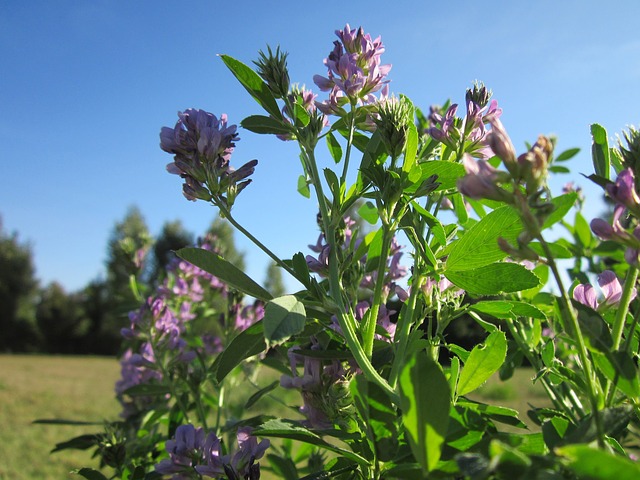China
is trying to satisfy the demand for high-quality food of its growing middle-class,
like meat and dairy products. However, China’s domestic manufacturers are
facing struggle currently, unable to compete in the market with the cheap
imports, due to domestic high production costs. One focus of China’s government
to improve the dairy industry is the promotion of domestic produced
high-quality alfalfa as the main feed for grazing livestock.

Source: Pixabay
China’s
agricultural sector, which is the largest in the world, is heavily depending on
grain at the moment. The government is trying to promote the production of
higher quality food for the growing middle class. This is part of the plan to
implement a more sustainable farming situation in China in general, by
promoting organic production and more efficient use of pesticides and water.
The
Chinese government has embraced the plan of using high-quality alfalfa to
ensure the production of high-quality dairy products. However, the domestic
supply is much underneath the growing demand for alfalfa, which opens the door
to overseas exporters getting a good share in the expanding market. Alfalfa
production is backed up by China’s Ministry of Agriculture, granting a good
amount of state subsidies for domestic high-quality alfalfa production.
The
overall plan for the future trend of alfalfa in China is written down in the
National Alfalfa Industry Plan from 2016-2020. CCM has outlined the most
important changes to the alfalfa industry and the effect on the dairy industry
in China as the result of it.
The
high production costs of milk in China are mainly caused by the costs of feed.
According to the report, China’s farmers count about 60-70% of the production
costs of milk for feed. As a huge importer of Alfalfa, China’s demand is still
rising by an enormous amount of almost 20% year on year.

Speaking
of the imbalance of supply and demand, China’s domestic supply shortage of alfalfa
has been over 1.3 million tonnes in 2015, with a rising trend. It is expected,
that by the year 2020 the alfalfa production in China will reach 1.2 million
tonnes. However, that supply will likely face a demand of more than 6.3 million
tonnes. In addition to that, the product quality of Chinese alfalfa is very
changeable while the production process show fragmented steps without good coordination.
According
to China’s plan for the alfalfa industry, the focus of planting and production
will be set on the traditional planting areas in the north and west of China.
Farmers and manufacturers will be encouraged and educated by improving the
processing and commercialization as well as increase the constructions of more
and enhanced production bases.
Finally,
the plan reaches to create a new planting area of alfalfa in northern China by
0.2 million ha with a total unit output of p tonnes per hectare. A total output
of 1.8 million tonnes should be possible, with a self-sufficiency of about 80%.
All the before mentioned measurements are supposed to lower China’s dependence on
expensive alfalfa imports and as a result reduce the production cost of feed
and finally also milk in China.
Alfalfa,
sometimes also called Lucerne, is a worldwide cultivated legume, which can be
harvested 4 to 6 times a year. It is used mainly for livestock forage and is
famous for its pest resistance and robustness,
About CCM
CCM is
the leading market intelligence provider for China’s agriculture, chemicals, food
& ingredients and life science markets.
Do
you want to find out more about the dairy market in China? Try our
Newsletters and Industrial Reports or join our professional online platform today
and get insights in Reports, Newsletter, and Market Data at one place.
For
more trade information of alfalfa, including Import and Export analysis as well
as Manufacturer to Buyer Tracking, contact our experts in trade analysis to get
your answers today.